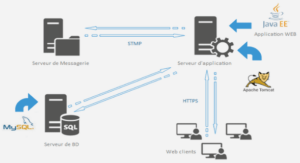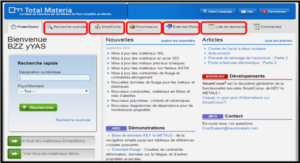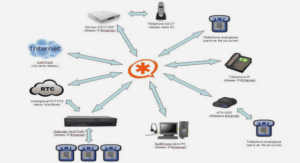Every year, thousands of people die or are seriously injured in traffic accidents. Transport Canada’s National Collision Database (NCDB) shows that, in 2017, 1,856 people died, and 152,772 were seriously injured Database, T. C. N. C. (2017). Given its potential to decrease the number of killed and injured, V2V communication systems have received considerable attention from both the research and industrial communities in recent years. V2V systems provide many applications to the passengers including Eshteiwi, K., Kaddoum, G., Fredj, K. B., Soujeri, E. & Gagnon, F. (2019); Qureshi, K. N. & Abdullah, A. H. (2013) .
– Safety: This is one of the most important V2V applications, which include warning messages at intersections or in the case of an obstacle on the road. This application also provides reports on accidents that may happen. A lane change warning message is sent to inform the other vehicles or drivers of who has the priority to pass to avoid accidents Jurgen, R. (2012).
– Traffic management: This application includes monitoring the speed limit, assessing traffic at intersections, and intersection control. Traffic management is useful to accommodate the rapid movement of emergency vehicles such as ambulances and police vehicles Raiyn, J. (2019).
– Driver assistance systems: In some cases, drivers need help to park their cars and even to set up their cruise control feature. Roadside units can inform drivers so they can better control their vehicles Ahrems, J. (2015); Sivaraman, S. & Trivedi, M. M. (2013).
– Direction and route optimization: This feature helps drivers to reach their destination in the shortest time and over the quickest route. Vehicles can share information about the best route in case of an accident, road obstacle or other special condition Abuashour, A. & Kadoch, M. (2017).
– General information services: As a result of the rapid development of V2V wireless communications, internet access has become an urgent need, not only to report accidents or congestions, but also to upload and download files, send email and surf the web Singh, P. K., Nandi, S. K. & Nandi, S. (2019).
As a part of the 5G of wireless communications, a vast army of autonomous/semi autonomous vehicles will take the road and engage with future intelligent transportation systems services. In 5G technology, fifty billion devices will have connectivity capabilities. Among these, ten million vehicles equipped with on-board communication systems and with a variety of autonomous capabilities will be progressively rolled out Tassi, A., Egan, M., Piechocki, R. J. & Nix, A. (2017). As a result of the rapid development of V2V wireless communications, internet access has become an urgent need, not only to report accidents or congestions, but also to upload and download files, send email and surf the web Singh et al. (2019). Based on the aforementioned applications, an enhancement of the currently achievable capacity and data rates are extremely important, and are therefore, being explored as part of the fifth-generation (5G) standardization effort by the third Generation Partnership Project (3GPP). One of the key areas to explore under 5G is vehicular cooperative wireless communications Campolo, C., Molinaro, A., Berthet, A. O. & Vinel, A. (2017), wherein the objectives are to reduce the aftermath of multi-path fading and signal degradation within the vehicular wireless communications space. Correspondingly, cooperative relaying systems based on V2V communications, also known as inter-vehicular communications (IVC), have been proposed to increase the diversity and generally improve the performance of wireless communication systems.
V2V cooperative relaying systems increase the diversity and generally improve the performance of wireless communication systems. In addition, the cooperation mechanism between vehicles and infrastructures can extend the coverage area, thereby offering improved road safety and better network connectivity Silva, C. M., Masini, B. M., Ferrari, G. & Thibault, I. (2017). Vehicular networks operate in the 5.9 GHz with a bandwidth of 75 MHz for dedicated short range communication (DSRC) techniques to support public and commercial applications of V2V and vehicle-to infrastructure (V2I) communications Commission, F. C. et al. (2001). To reduce the end-to-end delay and to concurrently double the spectral efficiency when self interference is eliminated Kim, D., Lee, H. & Hong, D. (2015), FDR was proposed and implemented. This is because with full duplex, also known as in-band full duplex, the relays avoid any spectral efficiency loss by transmitting and receiving over the same band simultaneously. However, in FDR, the performance could be severely degraded because of the SI at the relay node due to the simultaneous transmission and reception over the same channel, which cannot be perfectly eliminated Duarte, M. & Sabharwal, A. (Nov. 2010); Jain, M., Choi, J. I., Kim, T., Bharadia, D., Seth, S., Srinivasan, K., Levis, P., Katti, S. & Sinha, P. (2011). Meanwhile, in half duplex relaying, also known as out-of-band full duplex, the relays encounter a spectral efficiency loss as they transmit and receive in different time slots or over different frequency bands. As a result, in practical FDR protocol designs, the impact of self interference should be taken into account for a more accurate system analysis.
In vehicular communications, given the relatively small height of the antennas set on the vehicles, other vehicles such as vans, lorries, and buses present between a pair of communicating vehicles can obstruct the signal Boban, M., Vinhoza, T. T., Ferreira, M., Barros, J. & Tonguz, O. K. (2011). From the communication link blockage perspective, vehicles as obstacles have a significant impact on signal propagation; therefore, in order to properly model V2V communication, it is imperative to account for vehicles as obstacles. Furthermore, the effect of vehicles as obstacles cannot be neglected, even in the case of relatively sparse vehicular networks and averaging the additional attenuation due to vehicles, would fail to adequately describe the complex and significant impact of vehicles on the received signal power Boban, M., Vinhoza, T. T., Ferreira, M., Barros, J. & Tonguz, O. K. (2010). Furthermore, neglecting vehicles as obstacles in VANET modeling has profound effects on the performance evaluation of vehicular communications Akhtar, N., Ergen, S. C. & Ozkasap, O. (2014); Boban et al. (2010); Boban, M., Dupleich, D., Iqbal, N., Luo, J., Schneider, C., Müller, R., Yu, Z., Steer, D., Jamsa, T., Li, J. et al. (2019).
Cooperative Communications
In the next-generation of wireless communication networks, high data rate transmission and low bit error probability are essential requirements. On the other hand, due to the time-varying nature of the wireless channel and the often limited resources for transmission, a transmitted signal faces various detrimental effects, such as interference, Doppler spread, propagation path loss, shadowing, delay spread, and multipath fading, making it difficult to achieve high data rates. However, it is possible to increase the transmission data rates by increasing the transmission bandwidth or using higher transmission power. However, from a practical point of view, increasing the transmission bandwidth or the transmit power is not always feasible due to high system deployment costs. Furthermore, increasing the transmit power results in an increased interference to other transmissions and also decreases the battery life time of the transmitters. In general, the error probability observed in fading channels is much higher than that observed in a non-fading environment, namely Additive White Gaussians Noise (AWGN) channels.
In wireless communications, occurrences of deep fades in the propagation channel make reliable communications difficult or impossible. In general, diversity techniques can enhance reliability by transmitting the same information through different independent paths, thereby increasing the probability of successful transmission Yılman, E. (2006). Diversity can be achieved over the time, frequency, or space domains. With the rapid development of multimedia services, the next generations of wireless communications demand higher data rates and highly reliable transmission link guaranteeing an appropriate quality of service.
Combining techniques
Combining the signals from different antennas at the receiver can be used to improve the total quality of the signal that is to be detected. Diversity combining that takes place in the radio frequency (RF) signals is called pre-detection combining, while diversity combining that takes place in the baseband is called post-detection combining. In this thesis, we are going to explore the pre-detection combining. There are several ways to exploit signals from multiple diversity branches:
Selective Combining
The best signal copy is selected to proceed (demodulated and decoded), while all other copies are discarded. Selection Combiner (SC) chooses the branch with the highest signal to-noise ratio (SNR) (or equivalently, with the strongest signal assuming equal noise power among the branches). To obtain a significant diversity gain, independent fading in the channels should be achieved. Additionally, since the output of the SC is equal to the signal on only one of the branches, the coherent sum of the individual branch signals is not required. Therefore, the SC scheme can be used in conjunction with differentially coherent and non-coherent modulation techniques since it does not require knowledge of the signal phases on each branch. Hence, SC presents the ‘lower bound’ of the diversity that can be achieved in a system. Though SC requires some sort of channel knowledge, it results in bandwidth savings. As mentioned in Ikki, S. S. & Ahmed, M. H. (2008), the SC technique has two important advantages over regular cooperative diversity networks i) it reduces the inefficient amount of used channel resources to the best relay node and ii) it maintains the full diversity order. Moreover, SC is implemented in vehicular communication to decrease the number of costly RF chains at the receiver side, where only a single RF chain needs to be employed at both the transmitter and the receiver nodes Alghorani, Y. & Seyfi, M. (2017). In SC, the destination selects the branch with the highest SNR and the available output is the signal transmitted from that selected branch Surobhi (2009), Molisch, A. F. (2012) and Jaiswal (2010).
Maximal Ratio Combining
Here, all the copies of the signal are combined (before or after the demodulation), and the combined signal is decoded. Maximal ratio combining (MRC) compensates for the phases, and weights the signals from the different antenna branches according to their SNR then sum them. Sometimes one of the branches has a much lower SNR than the other branches and this will reduce the overall SNR to a lower value at the output. In order to maximize the SNR at the output, each branch is adjusted with a weight before all the signals are combined coherently. In order to maximize the SNR at the output, a branch with a higher SNR will be given a higher weight. Here, the individual signals must be co-phased before being summed, which generally requires an individual receiver and phasing circuit for each antenna element. MRC produces an output SNR equal to the sum of the individual SNRs. Thus, it has the advantage of producing an output with an acceptable SNR even when none of the individual signals are themselves acceptable Rappaport, T. S. et al. (1996).
INTRODUCTION |





